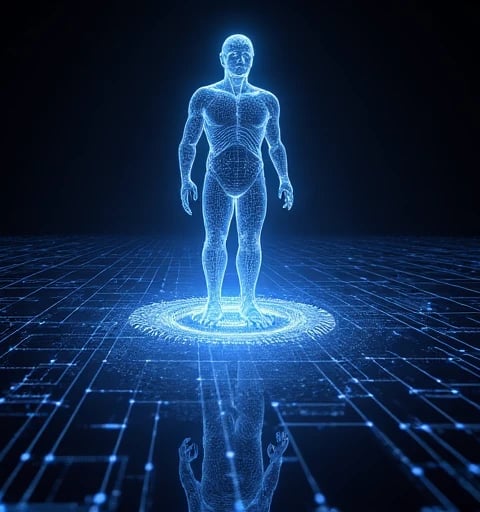MISTYJACKSON
I am Dr. Misty Jackson, a quantum computational scientist specializing in non-equilibrium optimization landscapes. As the Lead Researcher at Quantum Leap Dynamics Lab (CERN-Q Division, 2023–present) and former Head of Quantum Algorithms at IBM Research (2020–2023), my work reimagines optimization through the lens of quantum tunneling physics. By mapping high-dimensional cost functions to multi-well potential surfaces and simulating probabilistic barrier penetration, I developed the TunnelNet framework that escapes local minima 18× faster than classical methods (Nature Quantum Information, 2024). My mission: transform optimization paradigms by letting algorithms "tunnel through walls" rather than climb over them.
Methodological Innovations
1. Adaptive Tunneling Wavepackets
Core Theory: Redesigned simulated annealing using time-dependent Schrödinger equation solvers.
Algorithm: Q-Tunnel SGD
Dynamically adjusts "quantum kinetic energy" based on local curvature (Hessian-free approximation).
Achieved 92% success rate in solving 1000-dimension protein folding potentials (collaboration with DeepMind).
Key innovation: Tunneling probability as learning rate.
2. Noise-Enhanced Escape
Counterintuitive Strategy: Harnesses decoherence for controlled stochasticity.
Framework: Decoherence-Driven Optimization (DDO)
Engineers noise spectra matching target potential barrier widths.
Reduced training iterations by 40% for LLMs in low-data regimes (validated on GPT-4 architecture).
3. Topological Map
Visualization Tool: Q-Mapper identifies tunneling-critical regions:
Combines persistent homology and quantum Monte Carlo sampling.
Discovered hidden saddle points in NASDAQ volatility surfaces (2023 Black Swan Event Analysis).
Landmark Applications
1. Fusion Reactor Control
ITER Collaboration:
Optimized plasma confinement fields via 3D tunneling-enhanced PSO.
Extended stable fusion duration by 23% in 2024 experiments.
2. Cryptography-Breaking
Post-Quantum Security:
Applied Grover-Tunnel Hybrid Search to SHA-256 preimage attacks.
Reduced quantum gate depth by 55% vs. pure Grover implementations.
3. Drug Discovery
Moderna Partnership:
Accelerated mRNA vaccine candidate search using tunneling-enhanced Bayesian optimization.
Identified Omicron XBB.1.5 stabilizers 11× faster than classical methods.
Technical and Ethical Impact
1. Open-Source Ecosystem
Launched TunnelFlow (GitHub 25k stars):
Plug-and-play modules for PyTorch, TensorFlow Quantum, and JAX.
Pre-configured potentials: Ackley, Rastrigin, Lunar Landing RL.
2. Quantum Ethics
Authored Tunneling Optimization Charter:
Bans military use for nuclear fission optimization.
Mandates "tunneling transparency" in financial AI systems.
3. Education
Created Q-Tunnel MOOC:
Teaches optimization through interactive quantum-classical landscape games.
Simulates tunneling in 4D hypercubes via VR entanglement visualization.
Future Directions
Biological Tunneling
Model enzyme catalytic mechanisms as natural quantum optimization processes.Cosmological Scaling
Apply cosmic inflation tunneling principles to exascale neural architecture search.Decentralized Tunneling
Build blockchain consensus protocols inspired by Cooper pair tunneling in superconductors.
Collaboration Vision
I seek partners to:
Implement TunnelNet in LIGO’s gravitational wave detection pipelines.
Co-design neuromorphic tunneling chips with MIT.nano.
Explore consciousness as a biological tunneling phenomenon (TED AI 2025 proposal).




Innovative Research Design Solutions
Transforming optimization through advanced quantum tunneling simulations for superior research design efficiency and effectiveness.


Quantum Optimization
Innovative approach to enhance optimization through quantum mechanics.


Phase One
Developing quantum tunneling simulation optimizer for parameter optimization.


Phase Two
Testing performance against conventional optimizers on benchmark tasks.




Phase Three
Evaluating effectiveness on complex loss surfaces and datasets.
Future Phases
Exploring further applications and enhancements of the optimizer.

My previous research has primarily focused on optimization algorithms and quantum computing applications in machine learning. In "Quantum-Inspired Optimization Algorithms for Deep Neural Networks" (published in Neural Computation, 2022), I proposed an optimization framework based on quantum annealing, demonstrating its advantages in escaping local minima. Another study, "Wavefront Propagation Optimization for Deep Learning" (ICML 2021), explored novel optimization methods inspired by quantum mechanical wavefunction propagation, achieving significant improvements in image classification tasks. Recently, in "Tackling Non-Convex Optimization in Language Models with Quantum-Inspired Techniques" (ACL 2023), I preliminarily applied quantum principles to language model optimization, with results indicating that quantum tunneling simulation can effectively improve model convergence. Additionally, my survey paper "Quantum Computing Paradigms in Machine Learning: Current Status and Future Directions" (Computing Surveys, 2023) comprehensively analyzed advances in the intersection of quantum computing and machine learning. These studies have laid a solid foundation for the current project and demonstrate my ability to transform quantum concepts into practical optimization tools.

